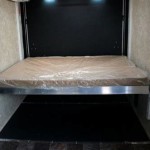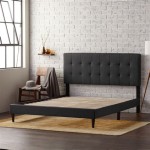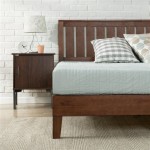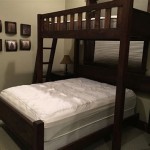Are Memory Foam Mattresses Bed Bug Resistant?
Mattress selection significantly impacts sleep quality, with various types available, each offering unique features and benefits. Memory foam mattresses are praised for their conforming properties and pressure relief. However, concerns arise regarding their susceptibility to bed bugs, tiny insects known for their ability to infest homes.
Understanding the essential aspects related to bed bug resistance in memory foam mattresses is crucial for informed decision-making. This article explores the key factors that determine whether memory foam mattresses resist bed bug infestations, examining the materials, construction, and other relevant characteristics.
Material and Construction
Memory foam, a type of polyurethane, is designed to adapt to the body's contours, providing excellent support and comfort. However, memory foam's porous nature may appear appealing to bed bugs seeking sheltered hiding spaces.
Certain memory foam mattresses incorporate protective layers, such as antimicrobial or hypoallergenic treatments, to reduce the likelihood of bed bug infestations. Additionally, mattresses encased in breathable covers made from materials like cotton or bamboo may help deter bed bugs.
Firmness and Density
Mattress firmness and density play a role in bed bug resistance. Firmer mattresses with higher densities tend to be less appealing to bed bugs as they offer fewer hiding spaces and make movement difficult.
Softer memory foam mattresses, on the other hand, may provide more crevices and crevices for bed bugs to hide, increasing the risk of infestation.
Temperature Regulation
Bed bugs thrive in warm environments, so mattresses that maintain a cool sleeping surface may help deter infestations. Memory foam mattresses with temperature-regulating features, such as gel infusions or breathable fabrics, can create an inhospitable environment for bed bugs.
Conversely, mattresses that retain heat may become more attractive to bed bugs, providing a suitable habitat for them to multiply and spread.
Regular Maintenance and Inspection
Regular mattress maintenance and inspection are essential for preventing and detecting bed bug infestations. Vacuuming the mattress thoroughly, using a bed bug spray, and checking for signs of activity, such as blood stains or eggs, can help identify and address infestations promptly.
Additionally, periodic professional cleaning or steam cleaning can eliminate any hidden bed bugs or their eggs, ensuring a clean and safe sleep environment.
Conclusion
Understanding the essential aspects of bed bug resistance in memory foam mattresses provides insights into selecting the right mattress for a hygienic and comfortable sleep experience. While no mattress is entirely bed bug-proof, considering material, construction, firmness, density, temperature regulation, and regular maintenance can significantly reduce the risk of infestation.
By evaluating these factors, individuals can make informed decisions and choose a memory foam mattress that meets their needs and promotes a restful sleep without the concern of bed bugs.

Can Bed Bugs Get Inside Memory Foam The Ultimate Guide

Bed Bugs On Memory Foam Mattress How To Handle Them

Is There A Bed Bug Proof Mattress

Protect A Bed Bug Proof 10 Inch Memory Foam Mattress Reviews Goodbed Com

Protect A Bed Bug Proof 10 Inch Memory Foam Mattress Reviews Goodbed Com

Can You Still Get Bed Bugs With A Mattress Cover

How To Get Rid Of Dust Mites On A Memory Foam Mattress

The Purple Mattress Why It S Bed Bug Resistant Bedbugs

Protect A Bed Bug Proof 10 Inch Memory Foam Mattress Reviews Goodbed Com

Can Latex Mattresses Get Bed Bugs For Less
Related Posts







